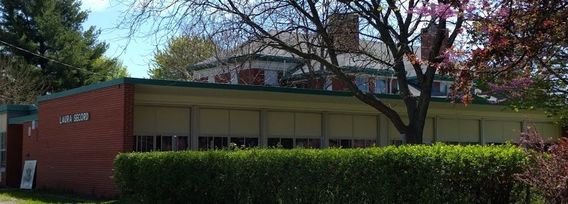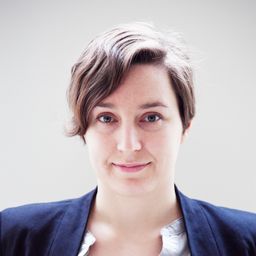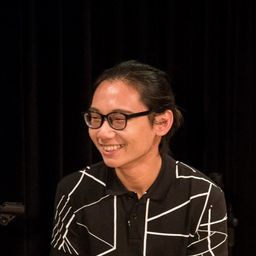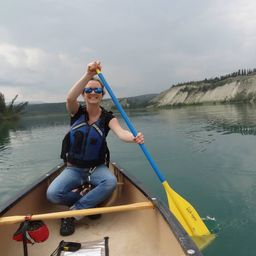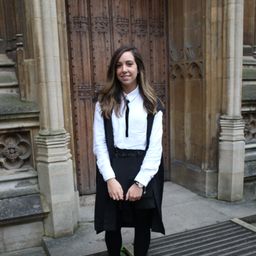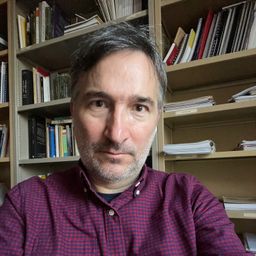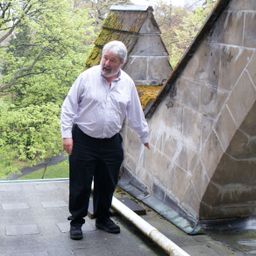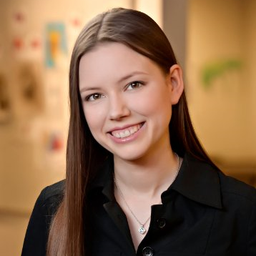
A PhD candidate in Art History and Visual Culture at York University, Natalie's interests include nineteenth and early twentieth-century religious architecture in Canada, medieval art and architecture, and the relationship between religious architecture, multisensory perception and synaesthesia. Her work at York is supervised by Dr. Malcolm Thurlby. Natalie holds a BA and MA in Art History from Carleton University and has experience as an assistant curator, and researcher.
Elementy, w których Natalie Anderson Rathwell uczestniczy
piątek 26 maj, 2017
Elementy, w których Natalie Anderson Rathwell attends
środa 24 maj, 2017
czwartek 25 maj, 2017
As a marker within territory, architecture stakes a claim over that territory on behalf of those who design and build. In Canada, this dynamic inscribed colonial powers onto the land in the wake of Indigenous dispossession, and this architecture is often celebrated as reflective of settler nationhood. Yet other architectures also emerge out of this colonial past: those specifically constructed to further Canada’s attempts to assimilate First Nations, Inuit and Métis communities into the do...
Economy—from the Greek oikois (home) and nemein (manage)—has held diverse meanings throughout history, and at multiple scales; from cities and buildings, to labour and materials. This session invites papers to reflect on the economies of architecture, both at the macro- and microeconomic scales, and throughout the life of buildings, from construction to maintenance, and (re)use. In particular, it asks scholars to explore how economy can be a productive category for architectural research, ...
This year, Canada marks the 150th anniversary of Confederation. To celebrate this momentous event, communities and organizations are uniting to examine our past and present, to consider plans for the future, and to try to define Canadian national identity. As a nation, Canada has always been a land of many voices, and thus of many identities; a fact that was formally recognized by parliament as multiculturalism some fifty years ago. Since then, we have become increasingly aware that Canadi...
This year, Canada marks the 150th anniversary of Confederation. To celebrate this momentous event, communities and organizations are uniting to examine our past and present, to consider plans for the future, and to try to define Canadian national identity. As a nation, Canada has always been a land of many voices, and thus of many identities; a fact that was formally recognized by parliament as multiculturalism some fifty years ago. Since then, we have become increasingly aware that Canadi...
Recuperation, reuse, recycling, reconversion, requalification: for over half a century, these concepts have been simultaneously associated with the notion of heritage. This period has been, in effect, marked by the transition from a “heritage of contemplation” to a “heritage of use,” to borrow Jean-Claude Marsan’s expression. In fact, buildings and sites are no longer just safeguarded for historic or aesthetic considerations, but for a new usage that is supposed to give them contemporary r...
This lecture examines some of the many fine historical churches in the Niagara region from the 1830s to the early 20th century. We commence with St Andrew's Presbyterian Church, Niagara-on-the-Lake (1831) and explain Scottish, English and American associations for the 'temple-form' design. After brief consideration of St Vincent-de-Paul Roman Catholic Church, Niagara-on-the-Lake, attention is turned to the Methodist Church at Beaverdams and the reconstruction of its original 1830s design a...
piątek 26 maj, 2017
Although the study of architecture in Canada is a relatively young field, it is no exaggeration to say that more attention has been given to religious architecture than any other form of building in the country. That is because as long as people have inhabited the land that is now known as Canada, there have been buildings devoted to their religious beliefs and practices. Churches, synagogues, mosques, and temples can be found in communities across the country in every style, from vernacul...
Although the study of architecture in Canada is a relatively young field, it is no exaggeration to say that more attention has been given to religious architecture than any other form of building in the country. That is because as long as people have inhabited the land that is now known as Canada, there have been buildings devoted to their religious beliefs and practices. Churches, synagogues, mosques, and temples can be found in communities across the country in every style, from vernacul...
sobota 27 maj, 2017
In light of the temporal emphasis of the conference as a whole, this session will investigate the idea of Canadian built environment in the context of “alternative modernities,” a term that defines Modernism not as a monolithic discourse, but as multiple aesthetic, cultural, and political ways of engaging with/or countering mainstream Western modernist narratives. In other words, how do constructed spaces/buildings in Canada run parallel to, or otherwise disrupt or complicate, dominant not...
Architectural walking tour of Niagara-on-the-Lake with the Niagara Historical Society and Museum. Visite à pied de l'architecture de Niagara-on-the-Lake avec le Niagara Historical Society and Museum. Meeting Point | Point de Rencontre : Niagara Historical Soceity and Museum, 43 Castlereagh Street, Niagara-on-the-Lake. (Approx. 8 minutes walking from downtown | 8 minutes à pied du centre-ville) Guide : Glenn Smith Description :
czwartek 26 maj, 2022
Over the past twenty or so years, the architecture of churches in Quebec and across Canada has triggered new and increasingly pressing questions: how should we approach their conservation, use, or meaning in a context where religious practice is in sharp decline, where the economic situation of parishes is prompting hasty decisions, and where radical versions of secularism are being imposed in the public space? These new questions call for different ways of thinking about the historic valu...
Over the past twenty or so years, the architecture of churches in Quebec and across Canada has triggered new and increasingly pressing questions: how should we approach their conservation, use, or meaning in a context where religious practice is in sharp decline, where the economic situation of parishes is prompting hasty decisions, and where radical versions of secularism are being imposed in the public space? These new questions call for different ways of thinking about the historic valu...
Over the past twenty or so years, the architecture of churches in Quebec and across Canada has triggered new and increasingly pressing questions: how should we approach their conservation, use, or meaning in a context where religious practice is in sharp decline, where the economic situation of parishes is prompting hasty decisions, and where radical versions of secularism are being imposed in the public space? These new questions call for different ways of thinking about the historic valu...
piątek 27 maj, 2022
Walking tour of the working-class housing and churches of Saint-Pierre-Apôtre and Sainte-Brigide-de-Kildare (now the Sainte-Brigide Cultural and Community Centre) in the south-central district of Montreal.The tour will be guided by Luc Noppen.A departure (by foot) will be organized from the conference site; the tour itself will begin at 5:00 pm at the Beaudry metro station (a metro station of Berri-UQAM, site of the conference).
sobota 28 maj, 2022
We offer a unique experience for the closing dinner of this conference in Montreal, in the former U.S. pavilion of Expo'67 - the most popular of the exhibition, with 5.3 million visitors: the "geodesic dome" designed by architect Buckminster Fuller (1895-1983) with the collaboration of Shoji Sadao. The self-supporting steel honeycomb structure, covered with a polymer skin, was burned down in 1976 and redeveloped in the 1990s, according to the plans of architect Éric Gauthier, into an envir...

